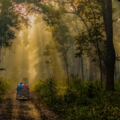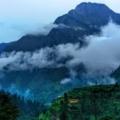Pachmarhi 2025 Monsoon: Best Waterfalls, July–August Travel Tips & Saputara festival
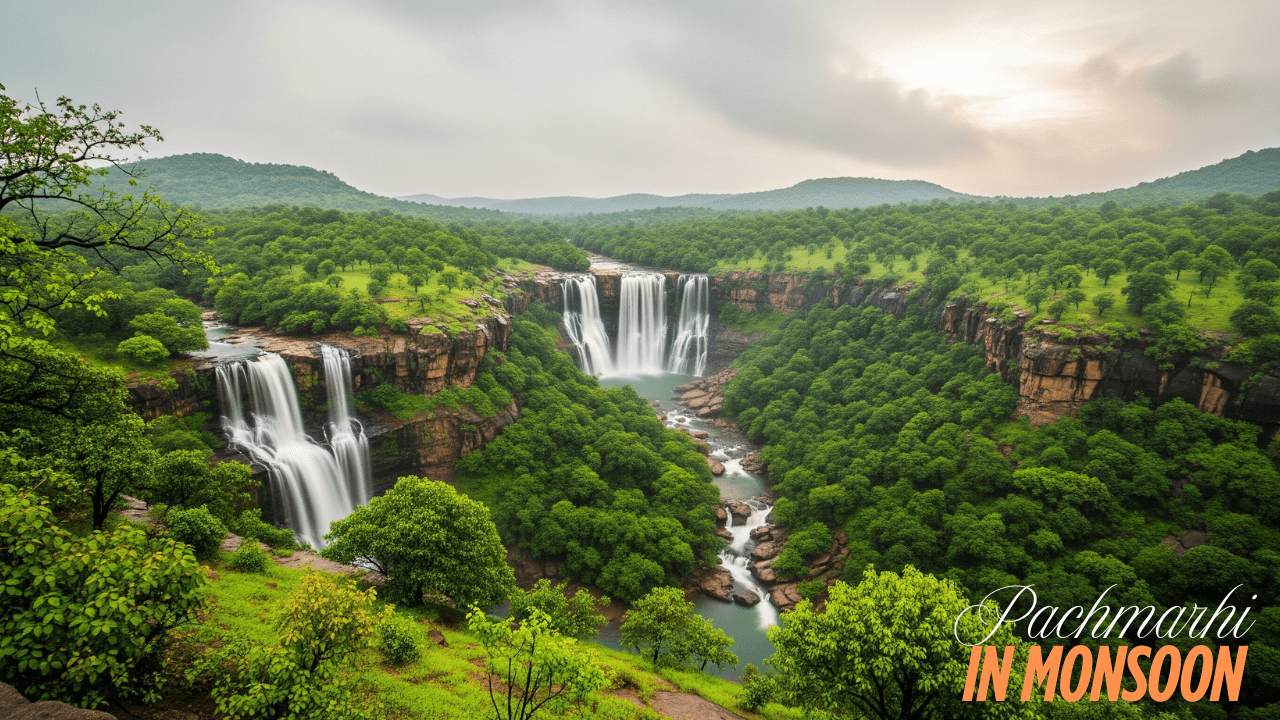
Every Monsoon, something spectacular happens in the Satpura hills that most tourists completely miss. While many avoid travel during rains, Pachmarhi in the monsoon season becomes central India’s best-kept waterfall wonderland. Modest streams that whisper through the year suddenly roar down cliffsides, offering one of the most unforgettable waterfall travel experiences in India. Here’s the twist that travel guides won’t mention: the best time to visit waterfalls in Pachmarhi is during the monsoon. Pachmarhi, during the rainy season, morphs from a gentle 100-meter cascade into a thundering spectacle that drowns out conversation from half a kilometre away. The Queen of Satpura saves her most dramatic performance for July and August, when smart travellers seeking offbeat monsoon travel destinations in India realise that the season they should avoid is actually when Pachmarhi’s hidden waterfalls and monsoon treks come alive. It’s not just a place to visit—it’s a place to feel nature at full volume.
In this Blog
Why July-August Weather Makes Pachmarhi India’s Best Monsoon Waterfall Destination
Pachmarhi Temperature and Climate During Peak Monsoon Season
Looking for one of the best hill stations to visit in the monsoon in India? Pachmarhi, with average temperatures between 19°C and 25°C during July and August, offers the perfect escape. Unlike the scorching plains, its elevation and forest cover make it a cool weather destination during the monsoon. Ideal for weekend getaways during the rainy season, it becomes a lush, mist-covered paradise.
Best Times to Visit Pachmarhi in Monsoon Season for its Waterfalls
Understanding daily rainfall patterns for India’s hill stations allows for strategic waterfall visits during optimal conditions. The heaviest rains in Pachmarhi typically occur between 2 PM and 6 PM, making early mornings and late evenings the best time to visit waterfalls. Understanding these rainfall patterns in Indian hill stations ensures both safety and scenic success for visitors during the monsoon travel season in India.
Complete Guide to Pachmarhi’s Must-Visit Monsoon Waterfalls
Duchess Falls: Pachmarhi’s Most Spectacular 100-Meter Monsoon Cascade
This 100-meter waterfall requires a challenging 4-kilometre hike from the Reechgarh track, making it one of the most thrilling monsoon treks in central India. But the effort is worth it, especially during July and August, when Duchess Falls in Pachmarhi transforms from a quiet cascade into a roaring column of water, audible from kilometres away. This is among the top trekking spots in Madhya Pradesh during the rainy season. What makes Duchess Falls truly special isn’t just the volume—it’s the vibrant ecosystem awakening in the monsoon, with rare orchids blooming and colourful birds emerging along the way.
Bee Falls: The Most Accessible Pachmarhi Monsoon Waterfall Experience
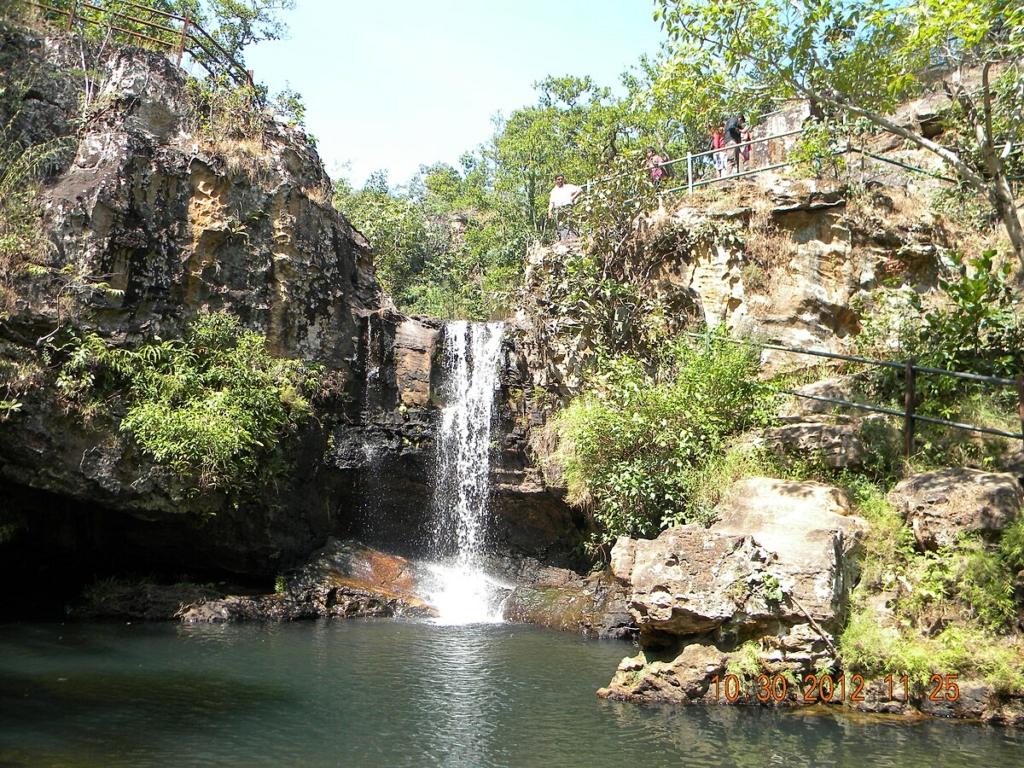
Bee Waterfall represents one of the best waterfalls to visit in India during monsoon, especially for first-time visitors exploring family-friendly monsoon destinations in India. With well-maintained paths and scenic viewpoints, it’s a favorite among those searching for easy treks. During peak rains, Bee Falls in Pachmarhi transforms into a multi-tier waterfall in India, as seasonal streams feed the main cascade, offering a spectacular waterfall photography spot. For travellers planning monsoon weekend getaways in central India, Bee Falls blends adventure travel, nature walks, and dramatic views—all in one unforgettable experience.
Rajat Prapat Silver Falls: Nature’s 107-Meter Monsoon Theater
Rajat Prapat earns its name from the silvery appearance of water cascading down dark rock faces—one of the most scenic waterfalls to visit during monsoon in India. This 107-meter-tall waterfall is among the tallest waterfalls to explore in Madhya Pradesh, and its grandeur is amplified during the rainy season, transforming it into a natural monsoon attraction in central India. With increased water volume, it becomes one of the most photogenic waterfalls in Pachmarhi, drawing nature lovers and photographers alike.
Apsara Vihar: Monsoon’s Natural Spa and Swimming Paradise
While Apsara Vihar attracts year-round visitors for swimming opportunities, the monsoon season in Pachmarhi reveals its true character as a natural spa experience in India and a peaceful meditation spot in Madhya Pradesh. The pool, fed by multiple small cascades, maintains comfortable temperatures even on the coolest monsoon days. Increased water flow creates natural massage jets along rocky edges, making it one of the best natural rock pools to visit in India for therapeutic and calming experiences.
Pachmarhi Monsoon Marathon 2025
The Pachmarhi Monsoon Marathon is a scenic hill run held every July through the misty Satpura ranges, featuring 5 km to 42 km races. With certified routes, cool monsoon vibes, and lush forest trails, it’s a dream run for nature lovers and endurance runners alike.
| Detail | Description |
|---|
| Event | Pachmarhi Monsoon Marathon |
| Date | 13 July 2025 |
| Location | MPT Glen View Resort, Pachmarhi |
| Race Categories | 5 km, 10 km, 21 km, 42 km |
| Route Highlight | Downhill first half, uphill second half (~950 m elevation gain) |
| Certified By | World Athletics & AIMS |
| Registration Deadline | 20 June 2025 or 1500 runners |
| Rewards | No cash prizes; trophies & finisher kits |
| Special Feature | Scenic monsoon trail through Satpura hills |
Essential Monsoon Travel Tips for Visiting Pachmarhi in July-August
Smart Packing and Weather Preparation for Monsoon Pachmarhi
Smart travellers pack layers rather than heavy waterproof gear—a key item on any monsoon travel packing list. Temperature fluctuations in Pachmarhi during monsoon, from sudden downpours to warm sunny breaks, require flexible clothing options. Quick-dry clothes for monsoon travel work far better than traditional raincoats, which become uncomfortable in humidity and may trap moisture against the skin. Waterproof bags for electronics in monsoon are a must—especially for cameras—but avoid plastic covers, as they can cause condensation.
Transportation and Road Access During Pachmarhi Monsoon Season
Road conditions in Pachmarhi during monsoon require a different planning approach than during peak season. While the main roads remain accessible, secondary routes to explore Pachmarhi in the monsoon, especially those leading to waterfalls, can become challenging. Reaching offbeat spots like Rajat Prapat or Duchess Falls may require 4×4 vehicles for Pachmarhi monsoon travel and experienced local drivers familiar with seasonal road conditions. Fortunately, local transport in Pachmarhi during monsoon adjusts to these conditions, often offering reliable access to remote and scenic areas. As the hill station sees fewer tourists during monsoon, travellers benefit from personalised tours in Pachmarhi during monsoon, with better availability of local guides.
How to Reach Pachmarhi – Your Gateway to the Queen of Satpura
Reaching Pachmarhi is like unwrapping a hidden gem in the heart of Madhya Pradesh. Whether you’re a road-tripper, a train enthusiast, or a flight-hopper, this serene hill station is closer than you think.
By Road – The Scenic Route Beckons
- From Bhopal (Approx. 200 km) – A 5-hour drive through Satpura’s winding beauty.
- From Nagpur (Approx. 250 km) – Cruise through highways and forest stretches in just about 6 hours.
- Regular buses and private taxis are also available from Pipariya, Bhopal, and Jabalpur.
By Train – Let the Rails Take You Back in Time
Your best rail stop? Pipariya Railway Station (about 50 km from Pachmarhi).
- Connected to major cities like Delhi, Mumbai, Howrah, and Jabalpur.
- From Pipariya, you can hop onto a taxi or shared jeep to begin your climb into the hills.
Pro tip: Early morning trains followed by a daytime drive make for a picture-perfect arrival.
By Air – Fly Close to the Clouds
While Pachmarhi doesn’t have its airport, you can fly into:
- Bhopal Airport (Raja Bhoj International Airport) – 200 km away
- Jabalpur Airport – Around 250 km away
From there, hire a cab or pre-book a car to drive through the Satpura ranges to your cosy hill retreat.
Best Pachmarhi Accommodation Options for Monsoon Travelers
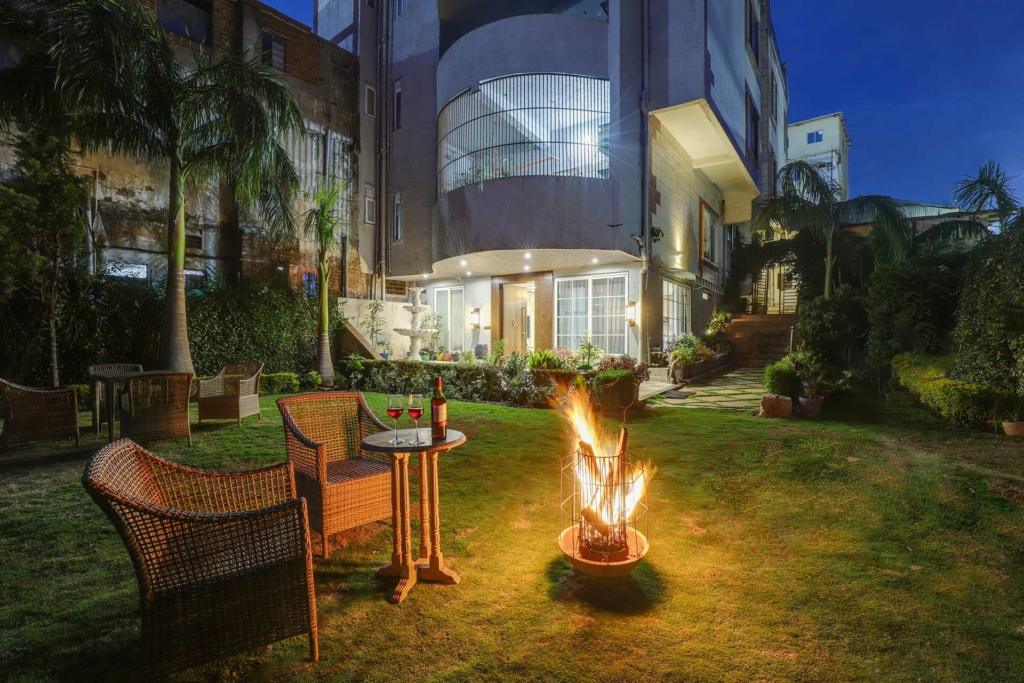

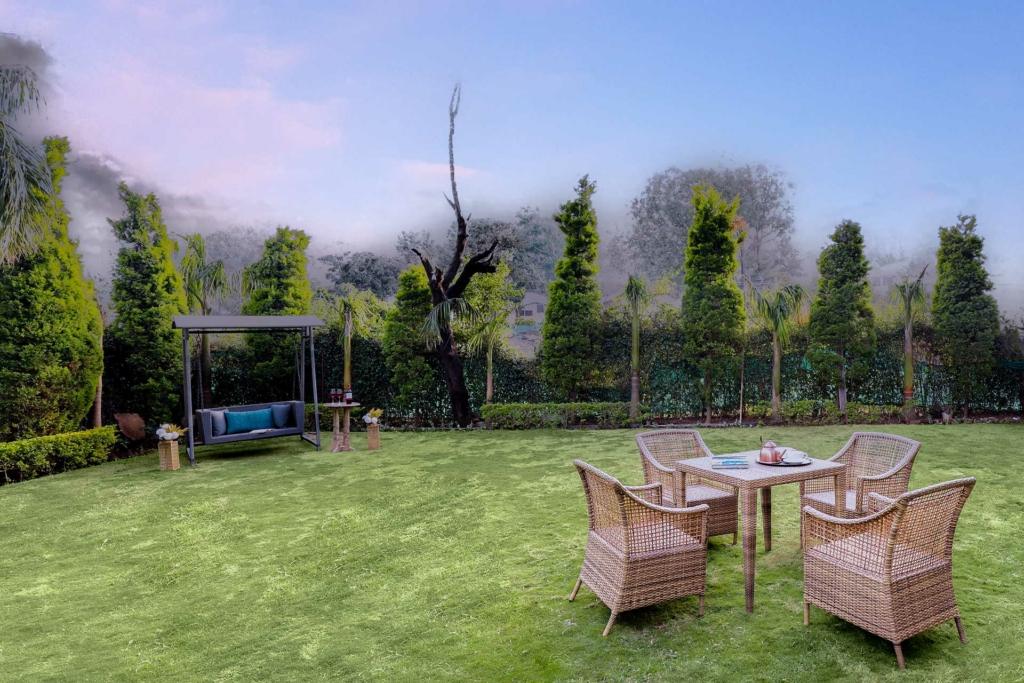
After a day of exploring Pachmarhi’s misty trails and lush waterfalls, unwind at Pandav Greens — a posh sanctuary where luxury meets nature. This sustainable neighbourhood offers manicured lawns, elegant interiors, and cosy corners for monsoon tea rituals. Let the rain-drenched serenity and refined comfort restore your spirit. Pandav Greens is where your monsoon getaway finds its perfect pause.
Local Cultural Insights: Experiencing Pachmarhi Monsoon Like a Regional
Traditional Monsoon Festivals and Agricultural Significance in Satpura Region

Monsoon season holds deep cultural significance for local Satpura communities, where agricultural cycles and traditional festivals in Pachmarhi during monsoon align with the rainfall patterns. Local events in Pachmarhi during monsoon months celebrate the rain’s life-giving power and mark the renewal of natural resources. These cultural festivals in Pachmarhi during monsoon offer a meaningful alternative to conventional sightseeing, highlighting how locals in Pachmarhi celebrate monsoon and maintain strong connections between the community and nature.
Off-the-Beaten-Path Monsoon Trekking Routes in Satpura Hills
Experienced trekkers discover that monsoon trekking trails in Satpura hills reveal hidden gems, with seasonal streams forming temporary bridges and paths unavailable during dry months. These offbeat monsoon treks in Madhya Pradesh require local guides for safe trekking in Pachmarhi during the rainy season. These seasonal trekking routes in Pachmarhi are ideal for adventurers seeking untouched landscapes. Wildlife sightings during monsoon treks in Pachmarhi increase dramatically. For those planning guided monsoon treks in Pachmarhi, understanding how the terrain transforms during the rainy season is crucial.
Image generated by Gemini AI
Written by: Elita Almeida




